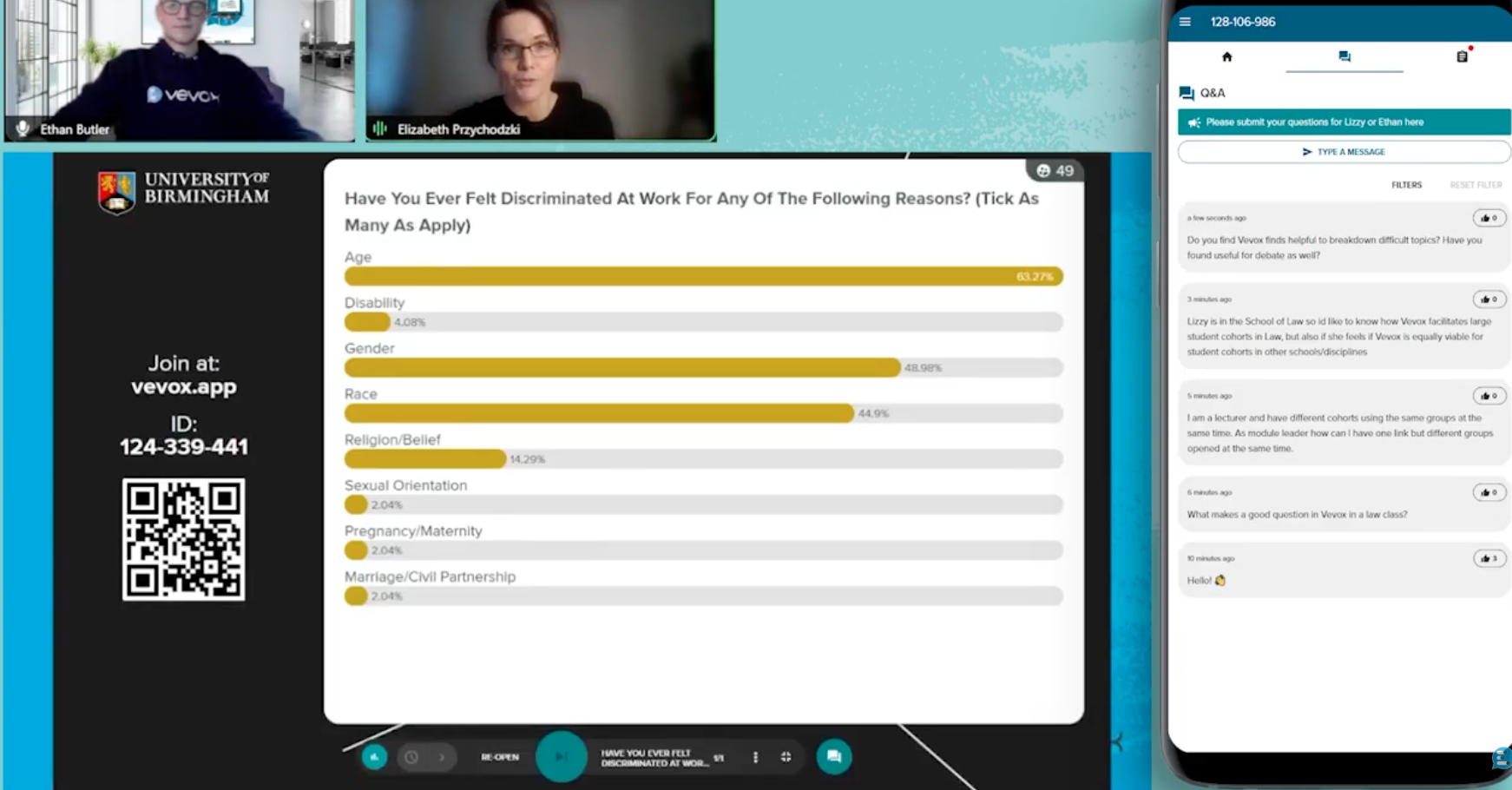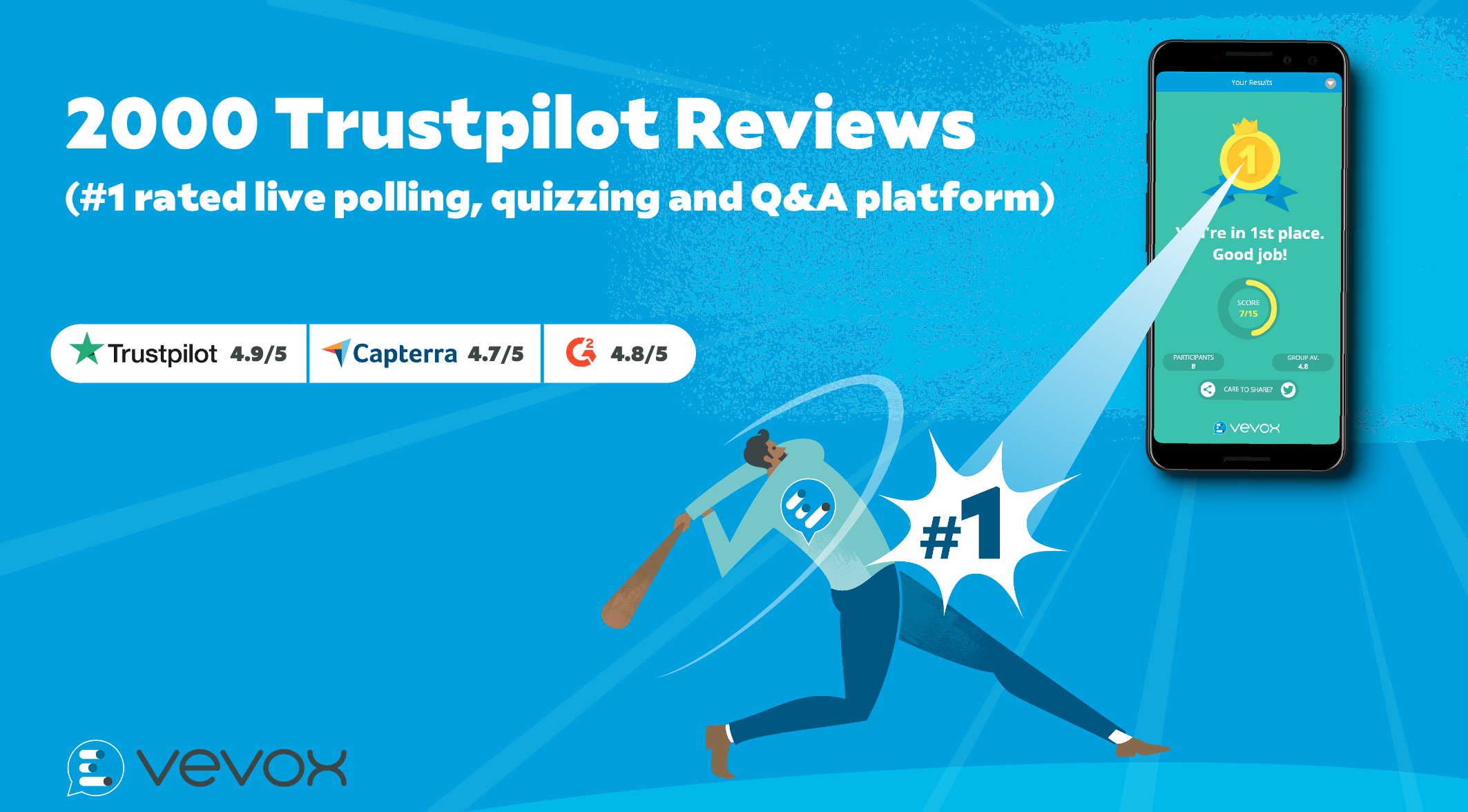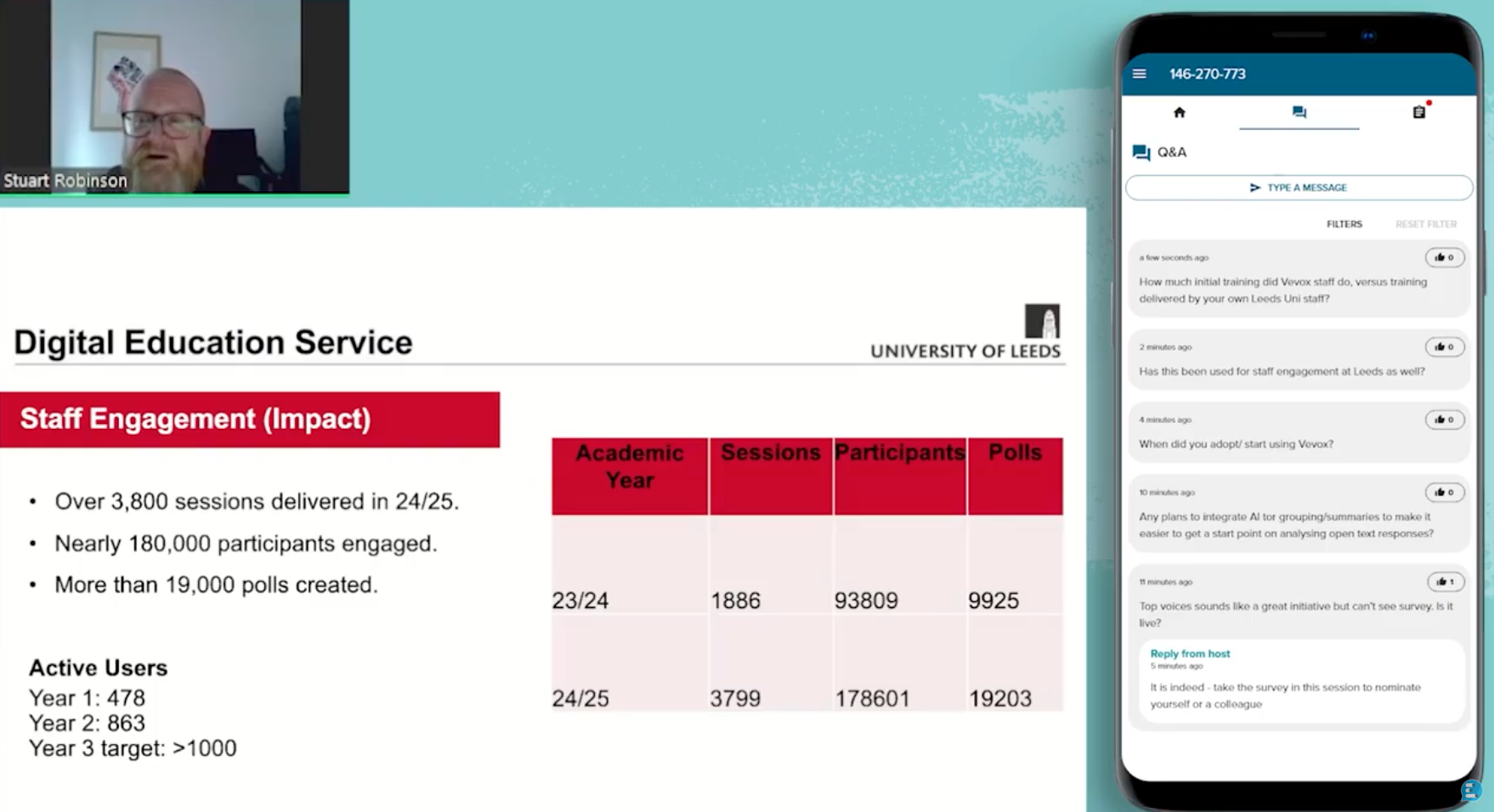If you haven’t yet experimented with live polling and discussion apps in class, the start of the new academic year is the time to give it a try. There are so many brilliant ways to use it, from energising your lecture to improving student retention and helping your students to achieve learning outcomes.
What is Vevox?
Vevox is a student response system that allows teachers to ask their students a question through polls or the Q&A discussion board. The students answer the question using their mobile phones, laptops, tablets or web browsers. Both the question and the students’ responses are displayed live in the app, on the web or in PowerPoint if your using the Vevox PowerPoint add-in.
How do lecturers use Vevox?
From our experience educators use Vevox in various ways. Some use it to ascertain prior subject knowledge when introducing a topic, or to find out students opinions on important issues. Example questions include:
- Which year did WW1 start? (for a History class)
- Which pioneering American poet and story-teller wrote ‘The Fall of the House of Usher?’ (for a Literature class)
- If a substance is strongly acidic, what is the PH range on a scale of 1-14? (for a Chemistry class)
- What is the correct way of saying, “putting on a brave face”? (for a Spanish class)
How does Vevox improve the classroom experience?
As well as helping teaching staff, Vevox helps students communicate with their teachers about timely or sensitive topics, including:
-
What the students think about their professor’s or teachers’ lessons, homework assignments, quizzes, exams, videos, projects, and other learning activities.Teachers can take the opportunity to get instant feedback by asking a closing poll at the end of a lecture with the question, ‘What part of today’s class was most interesting to you?’ You could also use Vevox’s word cloud feature to emphasize the most common words submitted by the students. For example: ‘In one word, describe how you’re feeling about today’s lecture?
Additionally, teaching or support staff can use Vevox’s anonymity function to remove the barrier of students embarrassment or fear of asking questions. Students can post questions anonymously and answer questions about a key upcoming lecture decision, whether to put off a quiz, exam, discuss assignment issues, or if an after lecture review session should be scheduled and/or where this session should take place.
What the students know or don’t know about what has been taught. In other words, Vevox can be used to measure and visualise student understanding, this includes checking to see what fundamental misconceptions are getting in the way of the students’ understanding. This is where correct answer feature is super handy! Lecturers can set a correct answer when creating their polls from the Vevox dashboard and once the poll is run, can choose whether or not to display the correct answer(s).This is presented on the Vevox polling projector and also the students’ devices, in real time.
At the end of a lecture lecturers can download all of the results to Excel as a report, allowing an instant review of student understanding across the class. A colour coded summary tab displays the correct and incorrect answers per poll, enabling you to visualise student understanding and assess whether the class or lecture has been a success.
What the students think might happen in the future (in terms of the subject matter.) This can include asking students to predict what might be taught next, given what is currently being taught.
When the students complete as in class assignment. Especially helpful when students are working in groups in class, students could enter ‘done’ in the discussion board to help the teacher keep track.
Above all else, the absolute best part of Vevox is that a teacher’s questions and the students’ responses can all be incorporated into a PowerPoint presentation.
Conclusion
Unlike a lot of other student response and engagement apps out there, Vevox has been around since 2014, and our capabilities only seem to grow as we react to users feedback. And the best part is that teachers can sign up for a free account that covers class sizes up to 100 students per lecture. To find out students’ feedback on Vevox, read our blog 4 reasons why students love Vevox.





